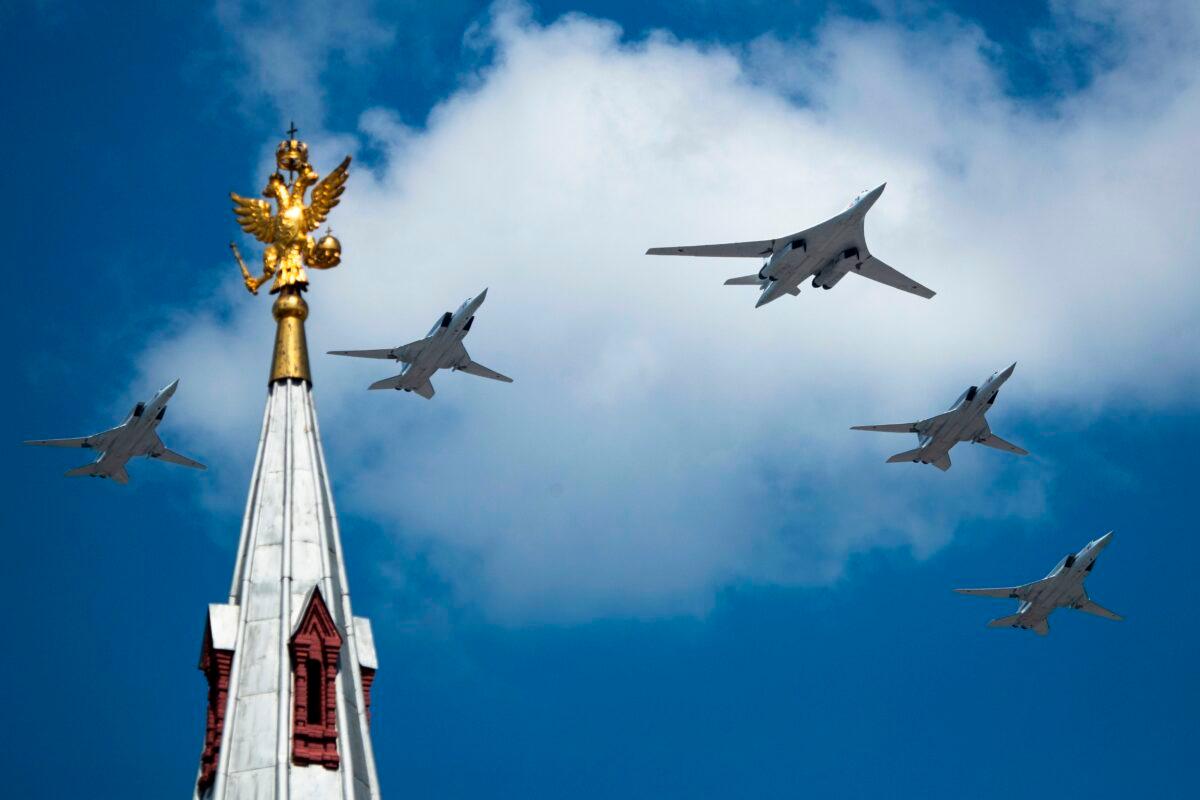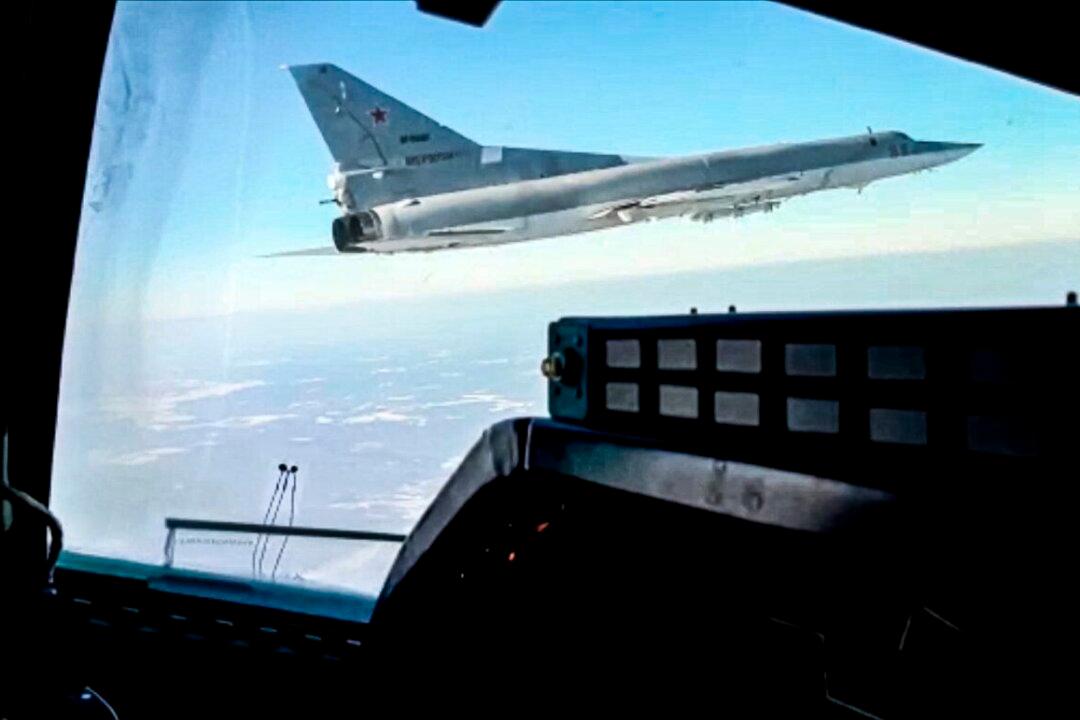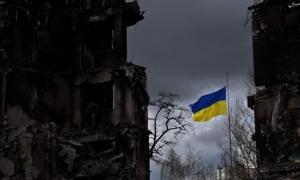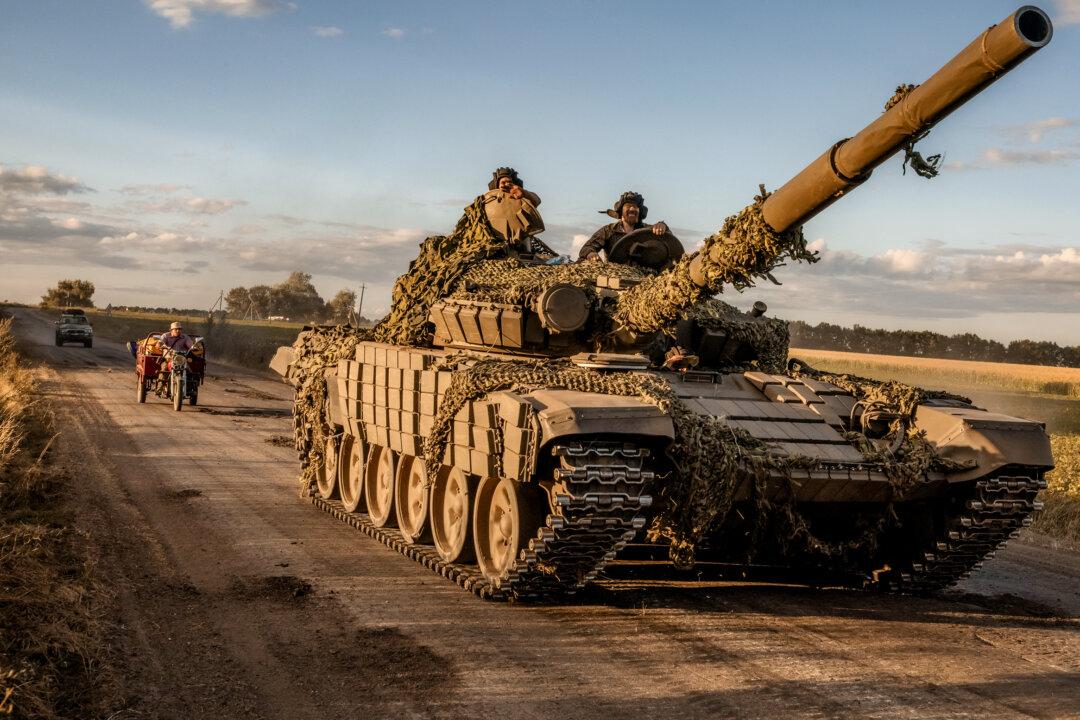Ukraine has claimed to have downed a Russian Tu-22M3 strategic bomber—for the first time—after Russia’s defense ministry blamed the incident on a technical failure.
In an April 19 statement, the ministry said the bomber had crashed while returning to an airfield in Russia’s southwestern Stavropol region after having completed a combat mission.
The incident appeared to have been caused by a “technical malfunction,” according to the defense ministry.
The Tu-22M3 is a long-range strategic bomber typically used to strike sea and ground-based targets with guided missiles and aerial bombs.
In a social-media post, Stavropol Governor Vladimir Vladimirov said at least one out of four crewmembers had been killed, while another remained missing.
Stavropol is located in Russia’s North Caucasus region, roughly 185 miles from Ukraine’s eastern border.
With an estimated flight range of more than 3,000 miles, Russia’s Tu-22M3 bomber can carry long-range munitions, including hypersonic missiles.
According to Kyiv and its Western allies, Russia frequently uses the Tu-22M3 to strike targets deep inside Ukrainian territory.
In a recent report, the London-based International Institute for Strategic Studies said Russia’s air force had 57 Tu-22M3s in its inventory.

Kyiv Claims Responsibility
Hours after the Russian announcement, military officials in Kyiv claimed that the aircraft had been downed by Ukrainian anti-aircraft fire.“For the first time, anti-aircraft missile units of the Air Force, in cooperation with the Defense Intelligence of Ukraine, destroyed a Tu-22M3 long-range strategic bomber,” Mykola Oleshchuk, commander of Ukraine’s air force, said.
He went on to assert that the ill-fated bomber had carried long-range Kh-22 cruise missiles “used by Russian terrorists to attack peaceful Ukrainian cities.”
The Kh-22 is a dual-capable missile that can carry both conventional and nuclear warheads.
An intelligence source cited by Reuters said Kyiv had used a modified Soviet-era S-200 air defense missile to shoot down the aircraft.
The source, however, declined to say where the missile had been fired from.
According to Kyiv’s military intelligence agency, the bomber had been taking part in long-range attacks on Ukrainian targets when it was brought down.
Earlier the same day, Russia carried out a large missile strike on Ukraine’s central Dnipropetrovsk region.
The strike killed at least eight people in and around the city of Dnipro and damaged several residential buildings, local officials said.
Russia has stepped up its aerial assaults on Ukraine’s energy system in recent weeks, striking multiple targets far behind the roughly 620-mile-long frontline.
Russia’s defense ministry, for its part, claimed that the bomber had not been carrying munitions when it crashed in Stavropol.
Airfields under Attack
Airfields in Russia—where long-range bombers are stationed—have been targeted by Ukrainian drones in the past.Last August, British military intelligence claimed that a Russian Tu-22M3 had been “highly likely destroyed” in an attack on a base in the northwestern Novgorod region.
In late 2022, three airbases in central Russia were attacked by drones of unknown origin, damaging at least two aircraft and killing three servicemen.
One of the targeted airbases, located deep inside Russian territory, was known to host long-range strategic bombers capable of carrying nuclear payloads.
While Kyiv never claimed responsibility for those attacks, they were widely celebrated at the time by Ukrainian military officials.
On April 17, Kyiv’s intelligence directorate told local news outlets that Ukrainian drones had attacked an aircraft production facility in Russia’s west-central Tatarstan region.
Located in Tatarstan’s city of Kazan, the facility reportedly manufactures long-range bombers, including the Tu-22M3.
Russia’s defense ministry later confirmed the attack on a “facility” in Tatarstan but said the drones had been downed without causing damage.
Russia invaded Ukraine in early 2022 with the stated aim of protecting Russian speakers in the eastern Donbas region and halting the further expansion of NATO.
Seven months later, Moscow effectively annexed four regions of eastern and southern Ukraine after holding controversial referendums.
Since then, it has regarded all four regions as Russian Federation territory.
Kyiv, with the support of its NATO allies, has vowed to continue fighting Russia’s numerically superior forces until all four regions are recovered.







